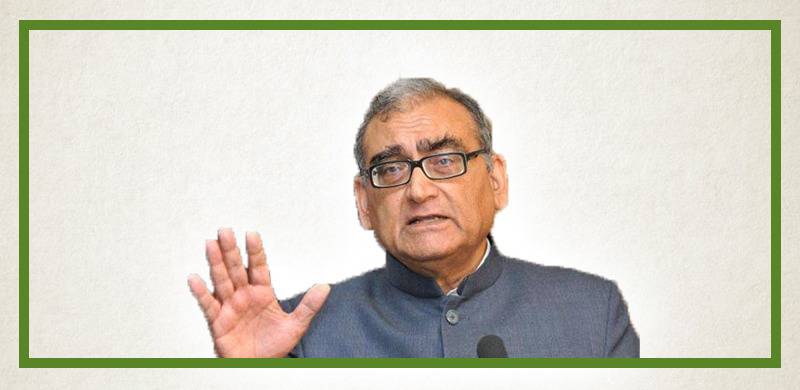
Those in India who criticise Westerners for racism should turn the searchlight inwards and see their own social reality and its ugly features, writes Justice Markandey Katju.
It is evident that the estrangement of Prince Harry and his wife Meghan Markle from the British royal family is because Meghan is half black. Racism is still deeply entrenched in British (as well as in European and American) society, and Meghan was often taunted by the British tabloid media and others, with the Royal family tacitly conveying their disapproval of this ‘uppity’ half caste who had dared to penetrate into the royal household in subtle ways.
But what about our own racism? Those living in houses with glass windows are hardly entitled to throw stones at others.
The truth is that Indian society is deeply racist where fair color is preferred to dark color.
The caste system, which is widespread in India, is known as ‘varna vyavastha’ in Sanskrit, the word ‘varna’ literally meaning color. So ‘varna vyavastha’ literally translates as ‘color arrangement’, and fair color is regarded superior to dark color.
It is probable that the caste system owes its origin to the fact that thousands of years ago a white colored people, the Aryans, entered India from the North West and conquered a dark skinned people. Even today, people of the lowest caste in India, the dalits, are usually darker in complexion than the upper castes (Brahmins, Rajputs, etc), though of course there are some fair colored dalits and some dark colored Brahmins (due to some inter mixture).
By itself neither white nor black color of skin is superior or inferior. But if a white colored people conquer a black colored people the conquerors will impose their values, and white color will be regarded superior ( just as if black colored people had conquered white colored people black color would have been regarded superior).
Fair coloured girls in India are likely to find a better matrimonial match, and matrimonial advertisements often mention that the girl is fair complexioned.
In Tamilnadu, the southernmost state in India (along with Kerala) where most people (except Brahmins) are dark complexioned, the commercial advertisements on roadside hoardings invariably display fair complexioned girls, not dark complexioned ones. Why? Because in Tamilnadu too fair complexion is regarded as a sign of superiority. The question often asked in Tamilnadu about a girl being considered as a matrimonial match is ‘ Sehuppa karuppa? ‘ i.e. ‘Is she fair or dark?’.
Indians of North Eastern states like Nagaland, Mizoram, Arunachal Pradesh, Meghalaya etc often have mongoloid features (as contrasted to most people in the rest of India who have Caucasian or Negroid features), and they are often insulted by being called ‘chinks’.
Students from African countries like Kenya, Nigeria, Uganda studying in India are often attacked physically or discriminated against in various ways, obviously because the color of their skins is black
So those in India who criticise Westerners for racism should turn the searchlight inwards and see their own social reality and its ugly features.
It is evident that the estrangement of Prince Harry and his wife Meghan Markle from the British royal family is because Meghan is half black. Racism is still deeply entrenched in British (as well as in European and American) society, and Meghan was often taunted by the British tabloid media and others, with the Royal family tacitly conveying their disapproval of this ‘uppity’ half caste who had dared to penetrate into the royal household in subtle ways.
But what about our own racism? Those living in houses with glass windows are hardly entitled to throw stones at others.
The truth is that Indian society is deeply racist where fair color is preferred to dark color.
The caste system, which is widespread in India, is known as ‘varna vyavastha’ in Sanskrit, the word ‘varna’ literally meaning color. So ‘varna vyavastha’ literally translates as ‘color arrangement’, and fair color is regarded superior to dark color.
It is probable that the caste system owes its origin to the fact that thousands of years ago a white colored people, the Aryans, entered India from the North West and conquered a dark skinned people. Even today, people of the lowest caste in India, the dalits, are usually darker in complexion than the upper castes (Brahmins, Rajputs, etc), though of course there are some fair colored dalits and some dark colored Brahmins (due to some inter mixture).
By itself neither white nor black color of skin is superior or inferior. But if a white colored people conquer a black colored people the conquerors will impose their values, and white color will be regarded superior ( just as if black colored people had conquered white colored people black color would have been regarded superior).
Fair coloured girls in India are likely to find a better matrimonial match, and matrimonial advertisements often mention that the girl is fair complexioned.
In Tamilnadu, the southernmost state in India (along with Kerala) where most people (except Brahmins) are dark complexioned, the commercial advertisements on roadside hoardings invariably display fair complexioned girls, not dark complexioned ones. Why? Because in Tamilnadu too fair complexion is regarded as a sign of superiority. The question often asked in Tamilnadu about a girl being considered as a matrimonial match is ‘ Sehuppa karuppa? ‘ i.e. ‘Is she fair or dark?’.
Indians of North Eastern states like Nagaland, Mizoram, Arunachal Pradesh, Meghalaya etc often have mongoloid features (as contrasted to most people in the rest of India who have Caucasian or Negroid features), and they are often insulted by being called ‘chinks’.
Students from African countries like Kenya, Nigeria, Uganda studying in India are often attacked physically or discriminated against in various ways, obviously because the color of their skins is black
So those in India who criticise Westerners for racism should turn the searchlight inwards and see their own social reality and its ugly features.
